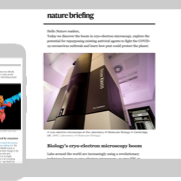
Si Wu
Editor Of Nature Briefing at Nature
When we write Nature Briefing, we track down the best science journalism – from breaking news you need to know, to fresh perspectives you may have missed. Let us get you up to speed on the wider world of science in the time it takes to drink a coffee. Source
Articles
-
Oct 5, 2024 |
nature.com | Xu Li |Si Wu |Lianbing Zhang |Jueru Lu |Rong Yang |Yuqi Meng | +5 more
During the wound healing process, the activation of signal transducer and activator of transcription 3 (STAT3) is considered crucial for the migration and proliferation of epithelial cells, as well as for establishing the inflammatory environment. However, an excessive STAT3 activation aggravates scar formation. Here we show that 450 nm blue light and 630 nm red light can differentially regulate the phosphorylation of STAT3 (p-STAT3) and its downstream cytokines in keratinocytes. Further mechanistic studies reveal that red light promotes wound healing by activating the PI3 kinase p110 beta (PI3Kβ)/STAT3 signaling axis, while blue light inhibits p-STAT3 at the wound site by modulating cytochrome c-P450 (CYT-P450) activity and reactive oxygen species (ROS) generation. In a mouse scar model, skin wound healing can be significantly accelerated with red light followed by blue light to reduce scar formation. In summary, our study presents a potential strategy for regulating epithelial cell p-STAT3 through visible light to address skin scarring issues and elucidates the underlying mechanisms. In mouse keratinocytes, upregulation of PI3Kβ by red light promotes p-STAT3 and accelerates skin wound healing, whereas ROS induced by blue light inhibits p-STAT3 and alleviates scar formation.
-
Aug 14, 2024 |
nature.com | Xin Zhou |Chuchu Wang |Daniel Hornburg |Xiaotao Shen |Michael Snyder |Si Wu | +1 more
Aging is a complex process associated with nearly all diseases. Understanding the molecular changes underlying aging and identifying therapeutic targets for aging-related diseases are crucial for increasing healthspan. Although many studies have explored linear changes during aging, the prevalence of aging-related diseases and mortality risk accelerates after specific time points, indicating the importance of studying nonlinear molecular changes. In this study, we performed comprehensive multi-omics profiling on a longitudinal human cohort of 108 participants, aged between 25 years and 75 years. The participants resided in California, United States, and were tracked for a median period of 1.7 years, with a maximum follow-up duration of 6.8 years. The analysis revealed consistent nonlinear patterns in molecular markers of aging, with substantial dysregulation occurring at two major periods occurring at approximately 44 years and 60 years of chronological age. Distinct molecules and functional pathways associated with these periods were also identified, such as immune regulation and carbohydrate metabolism that shifted during the 60-year transition and cardiovascular disease, lipid and alcohol metabolism changes at the 40-year transition. Overall, this research demonstrates that functions and risks of aging-related diseases change nonlinearly across the human lifespan and provides insights into the molecular and biological pathways involved in these changes. Understanding the molecular changes underlying aging is important for developing biomarkers and healthy aging interventions. In this study, the authors used comprehensive multi-omics data to reveal nonlinear molecular profiles across chronological ages, highlighting two substantial variations observed around ages 40 and 60, which are linked to increased disease risks.
Try JournoFinder For Free
Search and contact over 1M+ journalist profiles, browse 100M+ articles, and unlock powerful PR tools.
Start Your 7-Day Free Trial →